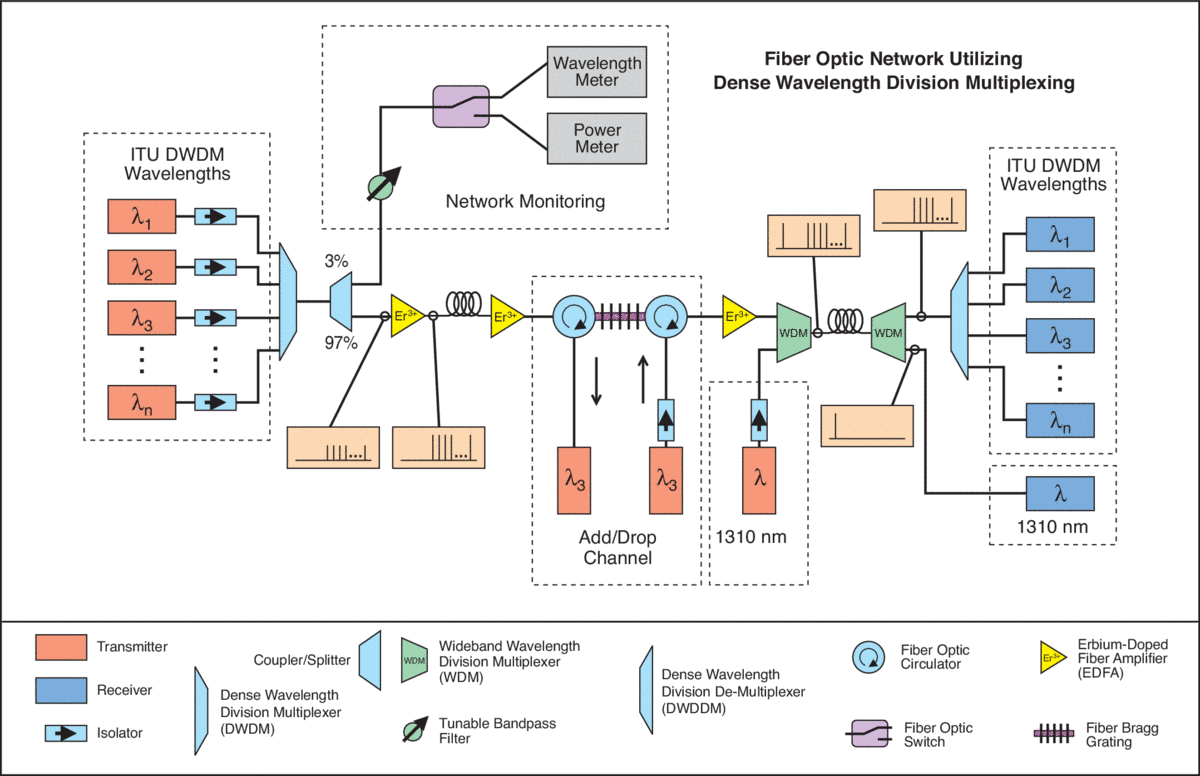- Related articles
- Optical Transceivers for Cisco WS-C3750E-24TD-E Switch
- Optical Transceivers for Cisco WS-C3650-24TD-L Switch
- Difference between single mode and multi mode fiber optic cable
- The Things You Need to Know about 1000BASE-X Ethernet Standards
- All Cisco MGBBX1's information (List price, Specs, Datasheet PDF, Compatibility matrix)
- Application of 10 Gigabit Ethernet Card
- All Cisco CWDM-SFP-1490's information (List price, Specs, Datasheet PDF, Compatibility mat
- The difference between SFP+ and GBIC
- What is Dark fiber?
- All Cisco MFEFX1's information (List price, Specs, Datasheet PDF, Compatibility matrix)

Definition of Fiber Optic Network
Fiber Optic Network is defined as the medium used to transmit data or information between two end points as light impulses along plastic or glass fiber. The Fiber Optic Network has been of great help in the telecommunication industry through facilitation of effective level of communication at low cost and faster than traditional fiber method. The fiber technology uses either plastic or glass optical fibers to carry the data.

Description of Fiber Optic Network
Fiber-optic networks have been used for decades to transmit large volumes of traffic across the country. The economics of fiber networks have only recently allowed for connecting the fiber directly to the home, creating a fiber-to-the-home (FTTH) network. Much of the following information comes from "Municipal Broadband: Demystifying Wireless and Fiber-Optic Options."
If you are on the Internet, you are using fiber for some portion of your connection. Both DSL and cable modem system networks rely heavily on fiber for parts of their network, but the actual connection to your house (frequently called the 'last mile') uses copper phone lines or coaxial cable lines. The bottleneck generally occurs over the last-mile.
Neither phone lines or cable can offer the speeds we need to remain competitive in the digital economy. The CEO of AT&T admitted that DSL is obsolete compared to cable. DSL over phone lines is limited by distance; the signal degrades for those living more than 1 mile away from the central office. Even for those living close to a central office, the top speeds are not comparable to speeds commonly offered with an all-fiber connection.
How Does Fiber Optic Network Work?
Fiber optic cables carry communication signals using pulses of light generated by small lasers or light-emitting diodes (LEDs).
Fiber cables consist of one or more strands of glass, each thinner than a human hair. The center of each strand called the "core" provides the pathway for light to travel, which is surrounded by a layer of glass called "cladding" that reflects light inward to avoid loss of signal and allow the light to pass through bends in the cable. The two primary types of fiber cables are called single mode and multi-mode fiber. Single mode fiber uses very thin glass strands and a laser to generate light while multi-mode fibers use LEDs.
Single mode fiber networks often use Wave Division Multiplexing (WDM) techniques to increase the amount of data traffic that can be sent across the strand. WDM allows light at multiple different wavelengths to be combined (multiplexed) and later separated (demultiplexed), effectively transmitting multiple communication streams via a single light pulse.
Conclusion
Today, you can communicate easily with anyone, anytime, and anywhere around the world through fiber technology. Indeed, the Fiber Optic Network has brought great impact. Regardless of where someone lives, he or she can communication around the world. Consequently, Fiber Optic Network has caused sound development of the rural areas.





































































